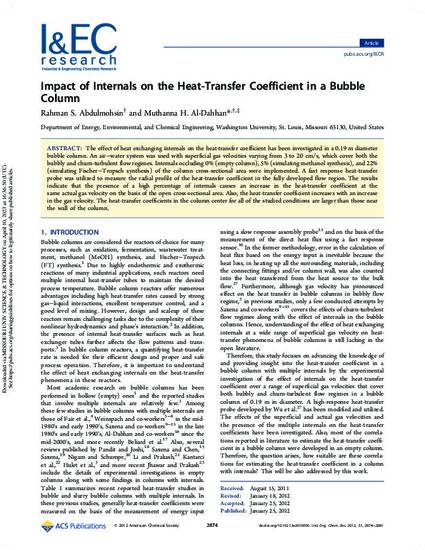
The Effect of Heat Exchanging Internals on the Heat-Transfer Coefficient Has Been Investigated in a 0.19 M Diameter Bubble Column. an Air-Water System Was Used with Superficial Gas Velocities Varying from 3 to 20 Cm/s, Which Cover Both the Bubbly and Churn-Turbulent Flow Regimes. Internals Occluding 0% (Empty Column), 5% (Simulating Methanol Synthesis), and 22% (Simulating Fischer-Tropsch Synthesis) of the Column Cross-Sectional Area Were Implemented. a Fast Response Heat-Transfer Probe Was Utilized to Measure the Radial Profile of the Heat-Transfer Coefficient in the Fully Developed Flow Region. the Results Indicate that the Presence of a High Percentage of Internals Causes an Increase in the Heat-Transfer Coefficient at the Same Actual Gas Velocity on the Basis of the Open Cross-Sectional Area. Also, the Heat-Transfer Coefficient Increases with an Increase in the Gas Velocity. the Heat-Transfer Coefficients in the Column Center for All of the Studied Conditions Are Larger Than Those Near the Wall of the Column. © 2012 American Chemical Society.
Available at: http://works.bepress.com/muthanna-al-dahhan/216/
